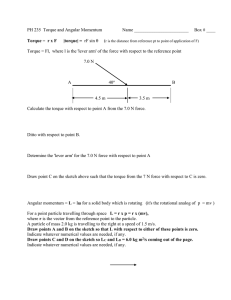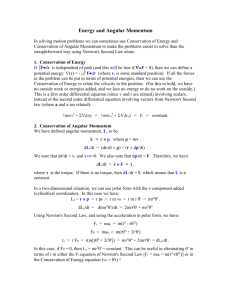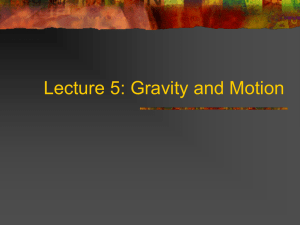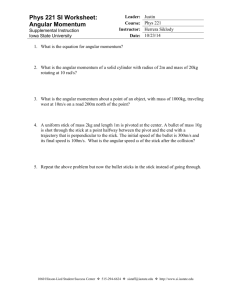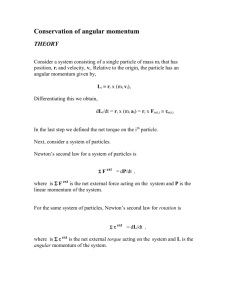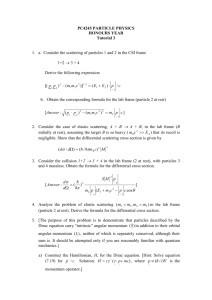Angular Momentum for System of Particles
advertisement
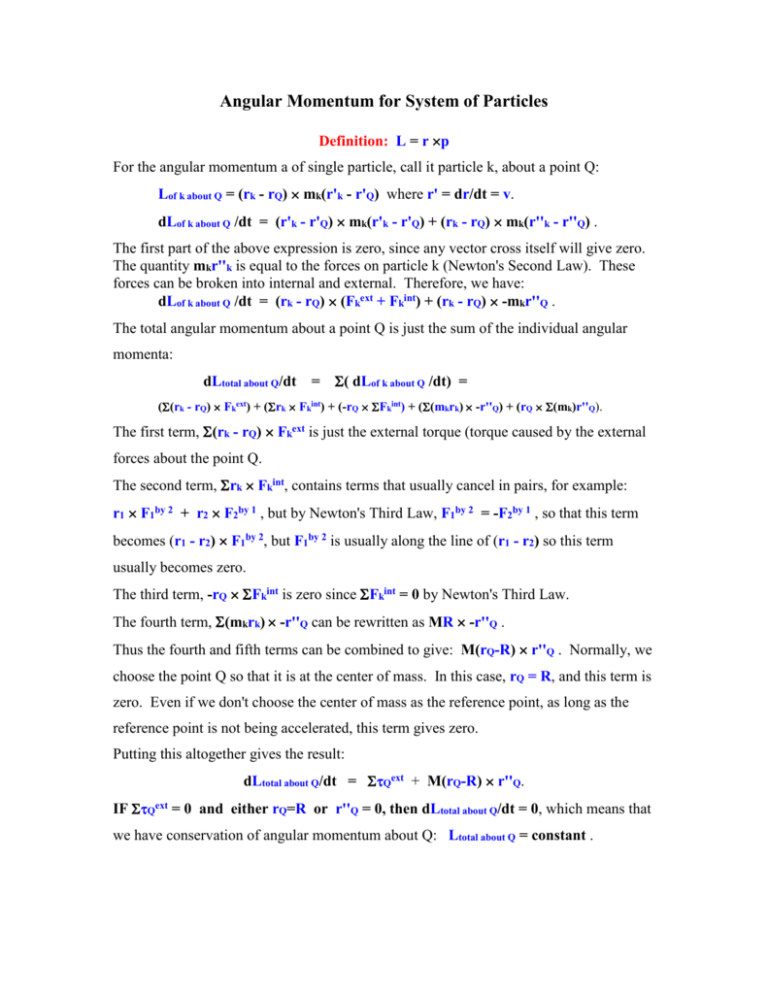
Angular Momentum for System of Particles Definition: L = r p For the angular momentum a of single particle, call it particle k, about a point Q: Lof k about Q = (rk - rQ) mk(r'k - r'Q) where r' = dr/dt = v. dLof k about Q /dt = (r'k - r'Q) mk(r'k - r'Q) + (rk - rQ) mk(r''k - r''Q) . The first part of the above expression is zero, since any vector cross itself will give zero. The quantity mkr''k is equal to the forces on particle k (Newton's Second Law). These forces can be broken into internal and external. Therefore, we have: dLof k about Q /dt = (rk - rQ) (Fkext + Fkint) + (rk - rQ) -mkr''Q . The total angular momentum about a point Q is just the sum of the individual angular momenta: dLtotal about Q/dt = ( dLof k about Q /dt) = ((rk - rQ) Fkext) + (rk Fkint) + (-rQ Fkint) + ((mkrk) -r''Q) + (rQ (mk)r''Q). The first term, (rk - rQ) Fkext is just the external torque (torque caused by the external forces about the point Q. The second term, rk Fkint, contains terms that usually cancel in pairs, for example: r1 F1by 2 + r2 F2by 1 , but by Newton's Third Law, F1by 2 = -F2by 1 , so that this term becomes (r1 - r2) F1by 2, but F1by 2 is usually along the line of (r1 - r2) so this term usually becomes zero. The third term, -rQ Fkint is zero since Fkint = 0 by Newton's Third Law. The fourth term, (mkrk) -r''Q can be rewritten as MR -r''Q . Thus the fourth and fifth terms can be combined to give: M(rQ-R) r''Q . Normally, we choose the point Q so that it is at the center of mass. In this case, rQ = R, and this term is zero. Even if we don't choose the center of mass as the reference point, as long as the reference point is not being accelerated, this term gives zero. Putting this altogether gives the result: dLtotal about Q/dt = Qext + M(rQ-R) r''Q. IF Qext = 0 and either rQ=R or r''Q = 0, then dLtotal about Q/dt = 0, which means that we have conservation of angular momentum about Q: Ltotal about Q = constant .
